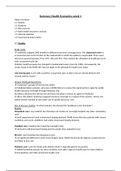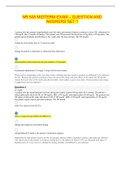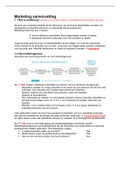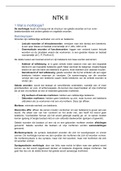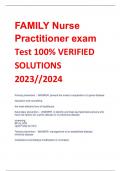Samenvatting
Complete summary Health Economics week 1
- Instelling
- Vrije Universiteit Amsterdam (VU)
- Boek
- Health Economics
This summary is a complete summary from the first week of health economics: Welfare state, Economics and Market Imperfections in Healthcare. It covers the book Health Economics by Jay Bhattacharya, chapter 1,2,7 and 8.
[Meer zien]
